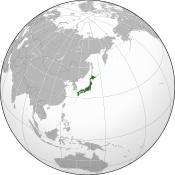A false quake warning in Japan exposes problems for practical use
Wednesday, July 16, 2008
One of the world's most advanced earthquake warning systems in Japan has been found to have some practical use problems. The Japan Meteorological Agency (JMA) apologized on Tuesday for erroneously issuing an "earthquake early warning for advanced users", with regards to an earthquake which occurred on the Monday night at sea off Ibaraki Prefecture, eastern Japan. There was, in fact, no possibility of huge tremors. The root cause was a simple human mistake that happened while setting a single seismograph with a criterion. The accidental release of the warning also revealed that some receiver devices could not handle warnings properly under certain conditions.
JMA operates a system called "Earthquake Early Warning" (EEW). It is designed to analyze seismic waves as soon as possible after an earthquake is detected, and issue a warning if large tremors are expected to happen. Its purpose is to minimize the damage caused by seismic tremors. Two EEW schemes were put into practical use in 2006 and 2007.
The warning was released by the EEW scheme for advanced users such as railway operators, workers in factories, managers at some offices and schools, and some local cable TV broadcasters. Another EEW scheme for the general public, which is utilized by nationwide broadcasting networks such as NHK, was not involved in this incident.
All four subway lines operated by the Tokyo Metropolitan Bureau were suspended in response to the first false warning, even though it was corrected within 11 seconds. At a private railway company, an EEW receiving system crashed, apparently because of the wrong data. East Japan Railway Company, which has its own earthquake observation network, judged the warning to be an error and didn't take a real reaction in its railway operation.
In addition to troubling railway companies, the warning also caused confusion among people. Some commercially-sold receiver devices failed to handle the warning appropriately. Some of them, adapted by an information distributor company for its service, displayed an incredible magnitude of 12.7, while the warning didn't include a datum of the JMA magnitude. One device at a junior high school boarding house in Aichi Prefecture called an alert as if the seismic intensity could have reached to the Scale 6 Lower (the third highest of 10 JMA scales), causing some girl students to cry. The device didn't say that the students were far away from the focus.
Such failures show that recipients of an "EEW for advanced users" are not always trained well enough to react appropriately. Ironically, in the JMA building a similar case was also confirmed. A receiver device displayed a Scale 7 alert, the highest of JMA scales.
According to JMA's announcement on the same night and news conference on the following morning, one seismograph was incorrectly set with the criterion of acceleration at 10 gals. (Correctly the criterion is at 100 gals.) This mistake resulted in the first (false) warning, which was soon corrected by the second warning. The JMA confessed that the seismograph has not undergone a check since it was installed in December, 2003.
The EEW scheme for advanced users is designed to put priority on calling alerts, so it releases a warning even if data from only one observation point is known. The same simple human mistakes were not committed at other points, according to JMA. In the parallel EEW scheme for the general public, the same mistake would not cause the same error, because it releases a warning based on data from multiple observation points, not depending on the criterion of acceleration.
Sources
- "False quake alert disrupts metropolitan train operations" — Yomiuri Shimbun, July 15, 2008
- "緊急地震速報を誤発表 首都圏の鉄道で一時運転見合わせ" — Asahi Shimbun, July 15, 2008 (Japanese)
- "地震速報の誤報、計器設定ミス原因 03年から点検怠る" — Asahi Shimbun, July 15, 2008 (Japanese)
- "緊急地震速報:誤報は設定ミス原因…気象庁会見" — Mainichi Shimbun, July 15, 2008 (Japanese)
- "緊急地震速報の誤報、気象庁が謝罪 地震計の点検怠る" — Nihon Keizai Shimbun, July 15, 2008 (Japanese)
- "緊急地震速報 事業者も誤情報" — NHK, July 15, 2008 (Japanese)
- "震度2なのに「5弱」 気象庁が千葉で緊急地震速報ミス" — Chunichi Shimbun, July 15, 2008 (Japanese)
- "誤報「震度7」 気象庁でも避難騒ぎ" — Asahi Shimbun, July 15, 2008 (Japanese)
- Press Release: "7月14 日19 時41 分に発表した高度利用者向け緊急地震速報(予報)について" — Japan Meteorological Agency, July 14, 2008 (Japanese)
- Press Release: "気象庁 緊急地震速報について 緊急地震速報の内容" — Japan Meteorological Agency, February, 2008 (Japanese)
External links
- "Earthquake Early Warning" - Japan Meteorological Agency about the EEW scheme for the general public
- "Explanation Table of JMA Seismic Intensity Scale", Japan Meteorological Agency, February, 1996
- Paula L. Gori, The social dynamics of a false earthquake prediction and the response by the public sector, Seismological Society of America, August 1993



